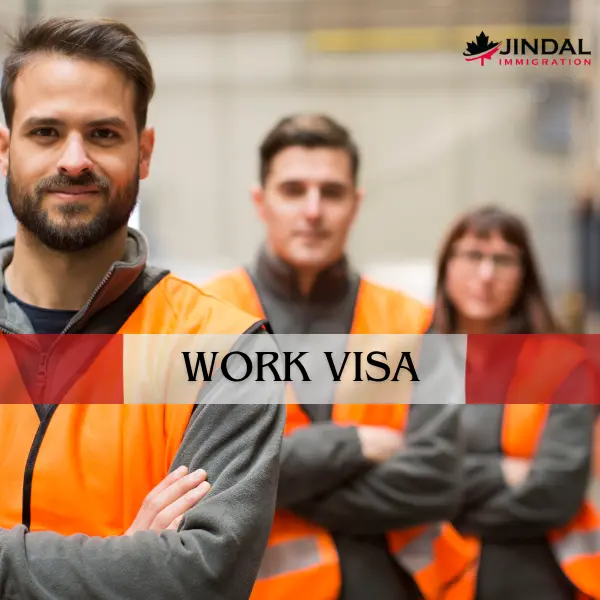A work permit (WP) is an official document issued by the Canadian government that authorizes a foreign national to work in Canada for a specific period. It is essential for pursuing career opportunities and contributing skills to the Canadian workforce. There are two primary types of work permits: open and closed.

An open work permit (WP) allows a foreign national to work for any employer in Canada. This type of permit provides significant flexibility for the holder, as it is not restricted to a specific job or location. However, there are still general conditions imposed on all temporary residents, including open WP holders, under the Immigration and Refugee Protection Regulations.
Types of Open Work Permits
Open WP can be unrestricted, allowing work for any employer in any location, or they may be restricted by occupation or location but not by the employer. For example, an open WP might restrict the holder to a specific province or territory if issued under certain conditions, such as being a provincial nominee.
LMIA Exemption
Open work permits are often issued under the Labour Market Impact Assessment (LMIA) exemption categories, meaning the holder does not need an LMIA to work in Canada. This exemption applies to various situations, including public policy considerations and reciprocal agreements between Canada and other countries.
Fees
Applicants for an open WP are subject to a permit holder fee in addition to the standard work permit processing fees. However, there are exceptions to this fee for specific categories of applicants, such as those described in the Immigration and Refugee Protection Regulations.
A closed work permit, also known as an employer-specific work permit, restricts the holder to work only for the specific employer mentioned in the permit. This type of permit is tied to a specific job and location, and the foreign national must have an official job offer from a Canadian employer supported by a Labour Market Impact Assessment (LMIA), unless exempt.
Conditions
The conditions of a closed work permit are mainly determined by the type of work permit the foreign national is eligible for. These conditions may include the type of work, the employer, the location, and the duration of the work in Canada. Closed work permit holders are prohibited from working for businesses suspected of posing a risk of sexual exploitation.
Impact of Job Loss
If a holder of a closed work permit loses their job, they must find another employer willing to go through the process of obtaining a new LMIA (if required) and apply for a new work permit before they can start working for a new employer. This situation underscores the less flexible nature of closed work permits compared to open work permits.
Both open and closed work permits serve to facilitate the entry of foreign workers into the Canadian labour market, but they cater to different needs and circumstances. Open WPs offer greater flexibility and are ideal for individuals who qualify under specific categories or public policies that exempt them from needing an LMIA. Closed work permits are more restrictive but are necessary for foreign nationals who have a job offer from a Canadian employer and do not qualify for an open work permit.
The application process for both types of permits involves determining eligibility, gathering required documents, completing application forms, paying applicable fees, and undergoing biometrics if required. The choice between an open and closed work permit depends on the individual’s situation, their goals for working in Canada, and their eligibility under Canadian immigration policies.
Eligibility for a WP in Canada includes proving intent to leave after the permit expires, financial stability, no criminal history, good health, and compliance with Canadian security standards.
The processing time for a WP application can vary greatly and is influenced by the type of permit, the applicant’s country of residence, and the current workload of the Canadian immigration authorities.
Family members may be included on a WP application, and depending on their eligibility, they may apply for their own work or study permits to accompany you in Canada.
To extend a WP, you must apply before your current permit expires and meet the requirements for extension, including maintaining your temporary resident status.
While holding a WP, you may be able to apply for permanent residence through various immigration programs, such as the Canadian Experience Class, Provincial Nominee Program, or Federal Skilled Worker Program.
With a closed WP, changing jobs means applying for a new WP with the new employer’s details and possibly obtaining a new LMIA.
The main difference between an open and closed WP is the flexibility to choose your employer. An open work permit is not restricted to a specific employer, while a closed work permit is.
Work permits may have restrictions, including the type of work, the employer, the location, and the duration of employment. These restrictions are intended to protect the Canadian labour market and the rights of foreign workers.
This comprehensive guide provides clarity on the process of obtaining a work permit in Canada, covering a wide range of relevant questions and categories to assist applicants in navigating the application process effectively.
Choosing Jindal Immigration for your work permit application offers a comprehensive and expert-driven approach to navigating the Canadian immigration process. With its deep understanding of immigration laws and dedication to client success, Jindal Immigration stands out for its personalized services, including job-search assistance tailored to match applicants with suitable employment opportunities in Canada. Their team of experienced professionals provides thorough profile evaluations, ensuring applications are optimized for success. Jindal Immigration is committed to offering affordable, high-quality services, ranging from WPs to permanent residency applications, all backed by exceptional customer support. Their proven track record of satisfied clients and their ability to provide reliable information and legal solutions make them an ideal choice for anyone looking to work in Canada.